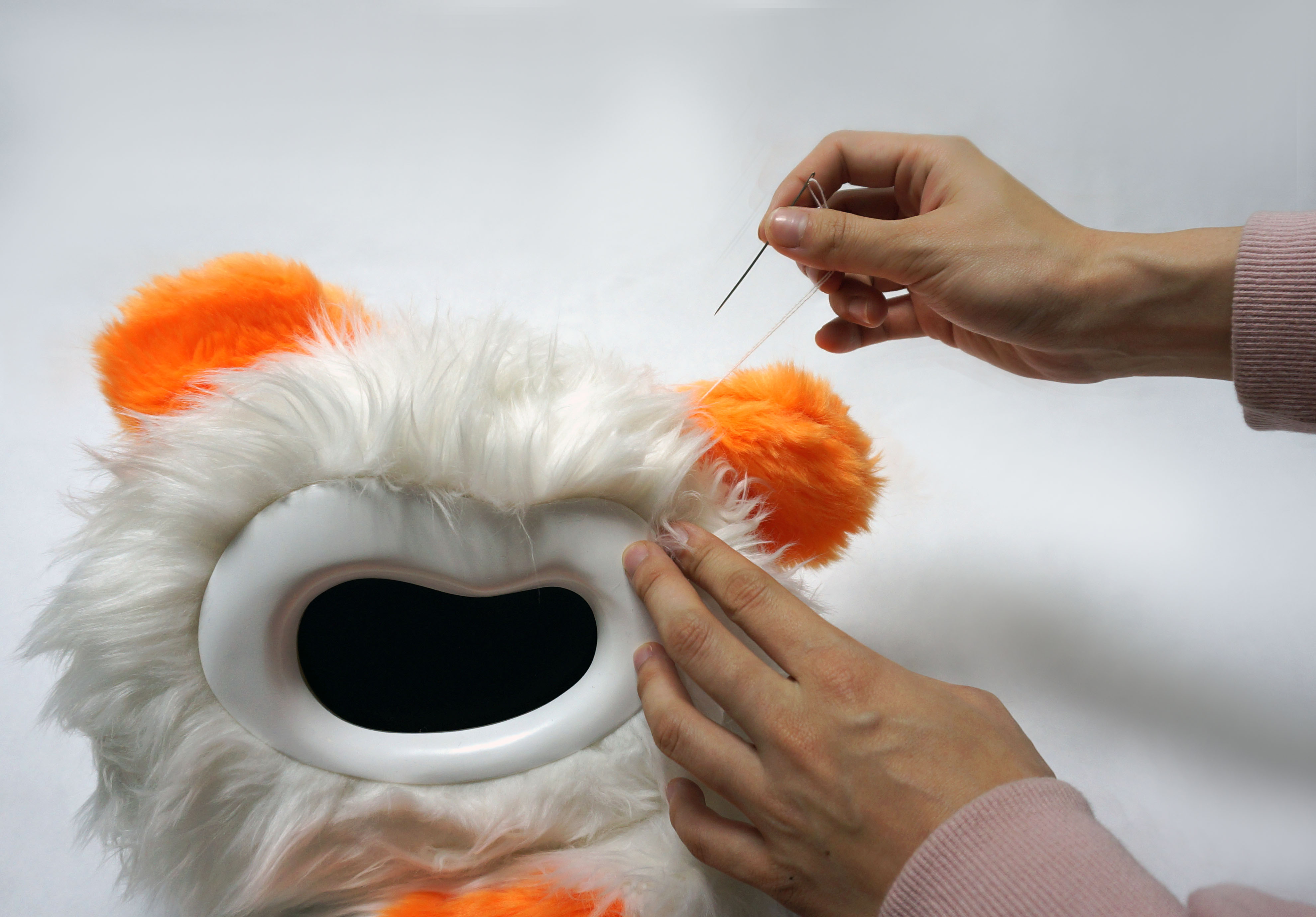I-Eng
Issue: XXIII.2 March + April 2016Page: 14
Digital Citation
Authors:
Describe what you made. I-Eng is an interactive toy set designed to teach new languages to young children. A plush doll speaks sentences related to nearby tagged objects and, depending on the context, can ask a child for other related objects. Through interaction with these tangible objects, an unscripted narrative unfolds, with children practicing both active and passive vocabulary. Children between the ages of 3 and 5 are naturally exposed to the foreign language and thus can have a playful "learning by doing" experience.
I-Eng is designed for both children and their caregivers. An accompanying storybook provides the object set to guide caregivers while they play with I-Eng with their children. A caregiver reads the storybook and role-plays synchronously with the guided sequence of object toys and the talking doll. This guided interaction following the storyline emphasizes important expressions that should be learned from the toy set.
Briefly describe the process of how this was made. We used Arduino for the sensing part of the system to make use of the abundant open resources on tag-reading. Processing was used to implement the tag-reading part for making interaction decisions, since we needed a tool to manipulate visual and audio elements at the same time. Both Arduino and Processing support serial communication, so sending data back and forth between the two systems was quite convenient. We placed the tag reader in the lap (lower front portion) of the doll to ensure reliable tag detection. The size of the doll was too big to 3D print, since it was approximately the size of a soccer ball. Further, the inside needed to be hollow in order to embed all the digital components. Therefore, we vacuum-formed an ABS panel to make the thin shell of the doll and then attached fur fabric to the outside.
What expertise (skills and competences) did it require? Skills for building an Arduino-based interactive system and visualizing facial expressions via Processing. Basic model-making skills for the plush doll and CAD modeling for the objects.
What materials and tools did you use? The plush doll combines various prototyping techniques. It was made of both digital components (e.g., an HDMI display, an Arduino board, an NFC shield, and a Bluetooth speaker) and physical materials (e.g., an ABS panel and fur fabric). The object toys were 3D printed with plastic materials and then NFC tags were embedded inside them. The storybook was made by stacking layers of laser-cut hardboards.
We used Arduino for sensing and Processing for processing the sensor data and generating toy expressions.
How would you improve on this if you were to make it again? The current prototype can detect only two toy objects at a time due to the technical constraints of the NFC shield we used. When more than two objects can be detected simultaneously, we will be able to explore more complicated narratives and implement simple games inside the play design. In addition, we could extend the system to allow users to tag existing objects (e.g., by attaching NFC stickers). This could be a way of embedding learning experiences into the children's everyday environment.
Hayeon Jeong, MyDesignLab, KAIST
[email protected]
Daniel Saakes, MyDesignLab, KAIST
[email protected]
Uichin Lee, MyDesignLab, KAIST
[email protected]
 Figure. Balsa foam sculpted into the shape of the doll goes inside the vacuum-forming machine with the ABS panel placed above.
Figure. Balsa foam sculpted into the shape of the doll goes inside the vacuum-forming machine with the ABS panel placed above.
 Figure. Testing fur fabric on the ABS shell. The fabric is attached with hot glue. The shell consists of the front (face) and back (body) parts of the doll.
Figure. Testing fur fabric on the ABS shell. The fabric is attached with hot glue. The shell consists of the front (face) and back (body) parts of the doll.
 Figure. Fur fabric is glued and sewn onto a vacuum-formed ABS shell.
Figure. Fur fabric is glued and sewn onto a vacuum-formed ABS shell.
 Figure. The doll contains an Arduino for sensing objects and a speaker and display controlled by Processing running on a laptop.
Figure. The doll contains an Arduino for sensing objects and a speaker and display controlled by Processing running on a laptop.
 Figure. HDMI display mounted on the inner front part of the doll (shown from the back).
Figure. HDMI display mounted on the inner front part of the doll (shown from the back).
 Figure. The 3D-printed objects are polished and spray-painted.
Figure. The 3D-printed objects are polished and spray-painted.
 Figure. 3D-printed objects have a circular dented space inside to store NFC tags.
Figure. 3D-printed objects have a circular dented space inside to store NFC tags.
 Figure. We lasercut the storybook out of cardboard with cutouts to fit the objects.
Figure. We lasercut the storybook out of cardboard with cutouts to fit the objects.
 Figure. A boy and his caretaker interacting with I-Eng.
Figure. A boy and his caretaker interacting with I-Eng.
Copyright held by authors
The Digital Library is published by the Association for Computing Machinery. Copyright © 2016 ACM, Inc.


